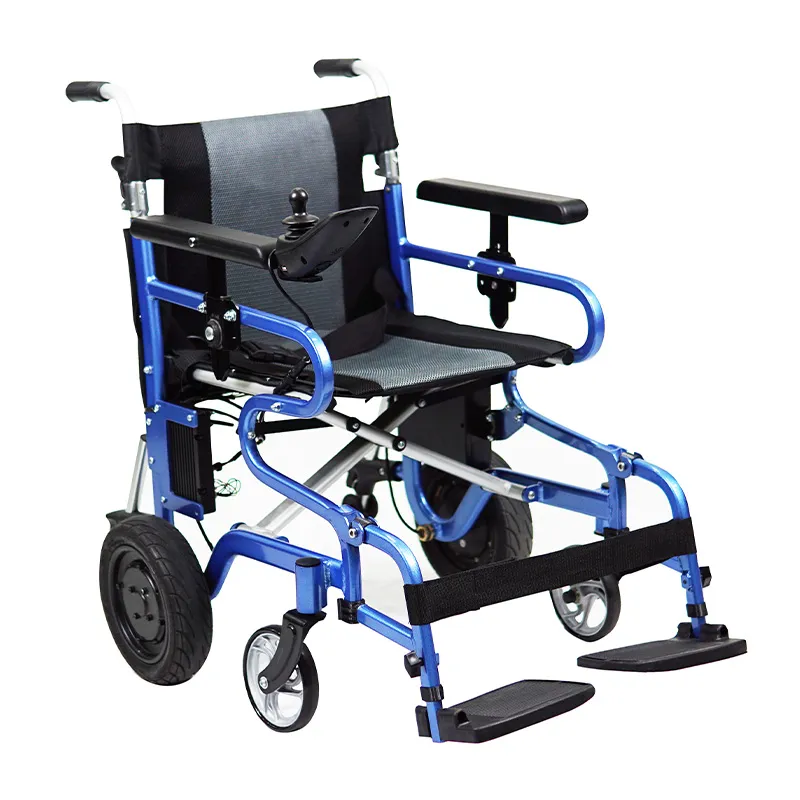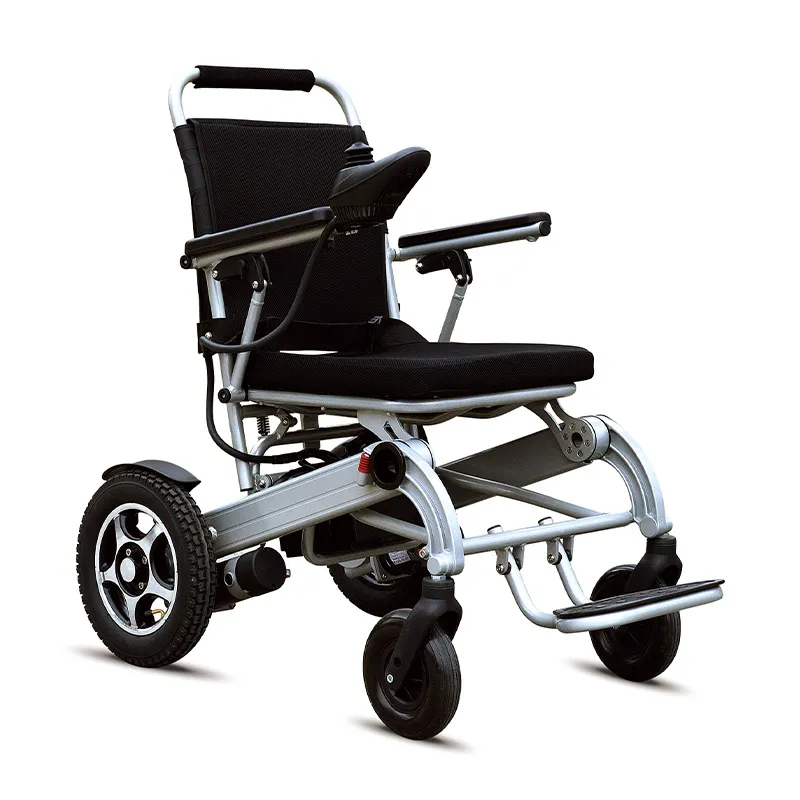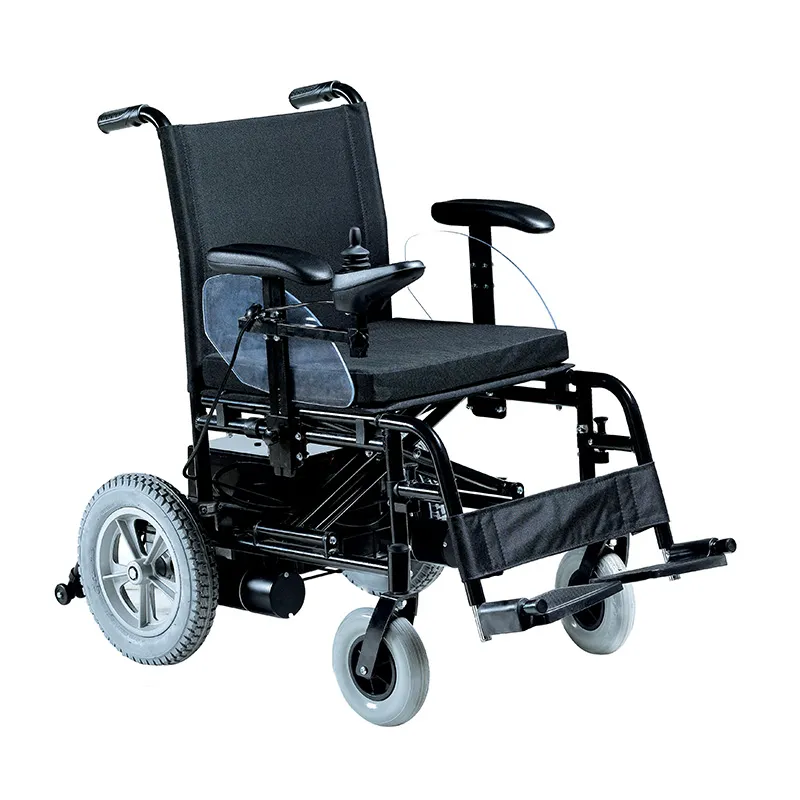
What is the weight limit of an electric wheelchair?
2024-10-02 15:30
As an important means of transportation for people with limited mobility, the design and use of electric wheel chairs involve several key parameters, among which weight limit is a crucial factor. The weight limit of an electric wheelchair is directly related to the safety of the user and the service life of the device.
This article will explore the weight limit of powerchair wheelchairs in detail, including the definition of weight limit, influencing factors, weight limits of different types of electric wheelchairs, the risks of overweight use, and how to choose a suitable electric wheelchair.

What is the weight limit of an electric wheelchair?
The weight limit of an electric wheelchair refers to the maximum weight that the device can safely carry under normal operating conditions, including the weight of the user and the weight of the items carried. The weight limit is determined by the manufacturer based on factors such as the design, material, and drive system of the wheelchair, and is clearly marked in the product manual or label. The weight limit is set to ensure the stability, controllability, and durability of the wheelchair while ensuring the safety of the user.
What are the factors that affect the weight limit of an electric wheelchair?
Structural design:
The structural design of an electric wheelchair is a key factor in determining its weight limit. The material, thickness, and connection method of the frame will affect the wheelchair's load-bearing capacity. High-strength materials such as aluminum alloys and carbon fiber can usually provide higher load-bearing capacity while maintaining a lighter weight.
Drive system:
The drive system includes components such as motors, gearboxes and batteries, and its performance and power directly affect the load-bearing capacity of the wheelchair. A high-performance drive system can provide stronger power, support greater weight, and ensure smooth operation and flexible control of the wheelchair.
Wheels and suspension system:
The size and material of the wheels and the design of the suspension system will also affect the load-bearing capacity of the electric wheelchair. Large-sized and high-strength wheels, as well as a good suspension system, can better disperse the weight and provide higher load-bearing capacity and comfort.
Safety standards:
The safety standards of various countries and regions have strict regulations on the design and manufacture of powerchair wheelchairs. These standards require manufacturers to consider multiple factors during the design process to ensure the safety and reliability of the wheelchair under various conditions of use. Therefore, the weight limit of the powerchair wheelchair must also comply with relevant safety standards.

What are the weight limits for different types of electric wheel chairs?
Weight limits for different types of electric wheelchairs: lightweight electric wheelchairs (generally between 100-120 kg), standard electric wheelchairs (generally between 120-150 kg), heavy electric wheelchairs (generally between 150-200 kg or even higher), sports electric wheel chairs (generally between 120-150 kg).
Lightweight electric wheelchairs:
Lightweight electric wheelchairs are usually designed for short distances and light use, and their weight limit is generally between 100-120 kg. These wheelchairs are usually made of lightweight materials, which are easy to carry and store, but their load capacity is relatively low, which is suitable for lighter users.
Standard electric wheelchairs:
Standard electric wheelchairs are suitable for daily use, and their weight limit is generally between 120-150 kg. The design of this type of wheelchair balances weight and load capacity, which is suitable for most users and can meet the needs of daily travel and activities.
Heavy electric wheel chairs:
Heavy electric wheel chairs are designed for heavier users, and their weight limit is usually between 150-200 kg or even higher. This type of wheelchair uses high-strength materials and a powerful drive system to provide higher load capacity and stability, but it is usually heavy and not easy to carry.
Sports electric wheelchair:
Sports electric wheelchairs are designed for users participating in sports activities and competitions, and their weight limit is generally between 120-150 kg. This type of wheelchair focuses on speed, flexibility and maneuverability, uses a high-performance drive system and lightweight materials, and can meet the needs of sports and competitions.
What are the risks of using an electric wheelchair with an overweight?
Safety hazards:
Using an electric wheelchair with an overweight can pose serious safety hazards. The wheelchair is designed to have a limited load capacity. Overweight use may cause structural damage, tire bursts, or motor overload, which may lead to dangerous situations such as the user falling or the device losing control.
Equipment damage:
Overweight use will accelerate the wear and aging of the electric wheelchair and shorten the service life of the equipment. Overload operation will cause overheating and damage to the motor, battery and other components, increasing the cost of repair and replacement.
Reduced control performance:
Overweight will affect the control performance of the electric wheelchair, resulting in problems such as inflexible steering and increased braking distance. Especially on ramps, turns and uneven roads, overweight use will significantly reduce the stability and safety of the wheelchair.

How to choose an electric wheelchair that suits your weight?
Determine your needs:
When choosing an electric wheelchair, you must first clarify your needs, including frequency of use, driving distance, terrain conditions, etc. Choose the appropriate powerchair wheelchair type and weight limit according to your needs.
Understand product parameters:
Carefully read the product manual of the powerchair wheelchair to understand its key parameters such as weight limit, drive system, and endurance. Make sure that the selected wheelchair can meet your weight and daily use needs.
Trial and evaluation:
Before purchasing an electric wheelchair, it is recommended to conduct a trial and evaluation to experience its comfort, controllability and stability in person. Through the trial, you can more intuitively understand the performance and applicability of the wheelchair and make a more informed choice.
Consult professionals:
When choosing an electric wheelchair, you can consult professional rehabilitation engineers or medical device experts and listen to their suggestions and opinions. They can recommend suitable products based on your specific situation and provide guidance on use and maintenance.








